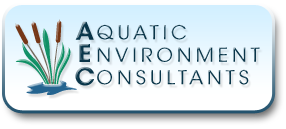Will aeration eliminate weed and algae problems?
Aeration alone will not necessarily eliminate plant and algal growth. In most situations, there are other underlying factors that contribute to the noxious growth. Aeration will definitely help the overall health of a water body by adding valuable oxygen, removing waste gases and aiding the break down of accumulated detritus. See fountains and diffusers for more information.
Why does my pond have weeds or algae and my neighbor’s pond does not?
Every pond has different water chemistry. A pond’s water quality is determined by physical characteristics such as size or location in relation to trees, houses, etc., location in the watershed and practices directly affecting influent (agriculture, construction, etc.).
Does barley straw effectively control algae?
Studies at Purdue University have not shown conclusive evidence that barley straw and other types of straw will effectively control algae. Some less virulent forms of filamentous algae may be affected by the straw’s toxins. Barley straw is sold only as a home remedy and cannot be sold as an algaecide since it is not an EPA registered product. If you are interested in this topic, we encourage you to read our blog post about barley straw‘s effect on ponds.
How can I control weeds and algae?
There are many methods used to control aquatic vegetation. An integrated pest management (IPM) program is the best approach. IPM utilizes multiple methods to control your undesirable vegetation. Methods of control may be herbicides or algaecides, mechanical removal, physical removal or biological agents.
Does Dredging Help?
Dredging is the quickest means of returning your pond or lake to near original conditions. By removing sediment from the water body, you also remove accumulated nutrients and increase the water depth. Dredging may be costly if the sediment has to be moved to an off-site location. While dredging will alter the physical condition of your water body, there may still be problems that originate from poor water quality.
Will grass carp control my plant and algae problems?
Triploid grass carp are another management tool that is utilized in IPM. While they will control certain types of submerged, rooted vegetation, they are a non-selective feeder and may not be the best management tool when managing for biodiversity and sport fishing. Grass carp do not control algae, emergent or floating vegetation and are most useful when control of a noxious rooted plant is desired and there are no other species of desirable vegetation present.
How do you know if there are too many bluegills or too many bass in a pond or lake?
A fish survey is the best means of obtaining information about a fish population. After the data is collected, our biologists can determine the “balance” of your fishery and make recommendations. The solution may be as simple as harvesting more of one species or stocking more of another.
Can I buy algaecides or herbicides from you?
No, AEC is not a licensed pesticide dealer. We can, however, offer our algae removal service, equipment and experience to assist you in maintaining your aquatic ecosystem.
Can I buy fish from you?
AEC specializes in large lake stocking enabling us to offer wholesale prices. Smaller ponds are stocked occasionally.
What plants should I put in my pond?
Water lilies are great for fish habitat and also shade shallow shoreline areas. Since lilies may overtake a shallow pond, they can be planted in a pot to discourage spreading. Burreed, rushes, arrowhead and wild rice can provide fish habitat as well as food for waterfowl along the shoreline. Vallisneria or wild celery is a good choice for deeper water plantings.
How much will it cost to treat a pond or lake?
Every pond or lake is different. The best way to evaluate your situation is to contact AEC and set up an initial site visit. We can meet with you, discuss your concerns, identify the plant species and obtain other pertinent information such as acreage, depth, etc. This initial visit may be free or cost a small fee (under $100), depending on the size of your water body.
